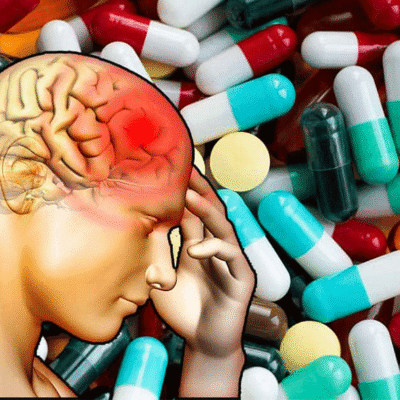The liver is one of the most vital organs in the human body, playing a central role in metabolism, detoxification, and digestion. Liver diseases encompass a wide range of conditions that affect its structure and function, ranging from mild inflammation to severe liver failure. The treatment of liver diseases depends on the underlying cause, severity, and overall health of the patient. With advancements in medical science, many liver conditions can now be managed effectively, preventing progression to life-threatening stages.
Common Types of Liver Diseases
Before discussing treatment options, it is essential to understand the most common types of liver diseases:
- Hepatitis – Inflammation of the liver, usually caused by viral infections (hepatitis A, B, C, D, and E).
- Fatty Liver Disease (FLD) – Accumulation of fat in the liver, commonly associated with obesity, diabetes, and alcohol consumption. It includes:
- Alcoholic Fatty Liver Disease (AFLD)
- Non-Alcoholic Fatty Liver Disease (NAFLD)
- Cirrhosis – Permanent scarring of the liver due to long-term damage.
- Liver Cancer – Can be primary (originating in the liver) or secondary (spreading from other organs).
- Autoimmune Liver Diseases – Includes autoimmune hepatitis, primary biliary cholangitis, and primary sclerosing cholangitis.
- Genetic Disorders – Such as Wilson’s disease and hemochromatosis.
General Principles of Liver Disease Treatment
The primary goal in treating liver diseases is to halt or reverse the damage, relieve symptoms, and prevent complications. This often involves:
- Treating the underlying cause (e.g., virus, alcohol, obesity)
- Managing symptoms and complications (e.g., swelling, jaundice)
- Monitoring liver function regularly
- Educating patients on lifestyle changes
- Antiviral Therapy for Hepatitis
Viral hepatitis is one of the most treatable forms of liver disease:
- Hepatitis A and E: Typically self-limiting, requiring only supportive care.
- Hepatitis B: Managed with antiviral medications like tenofovir or entecavir to suppress the virus and prevent progression.
- Hepatitis C: Now curable in most cases using direct-acting antivirals (DAAs), which have revolutionized treatment, offering cure rates above 95%.
Vaccines are available for hepatitis A and B, playing a critical role in prevention.
- Lifestyle Modification
Regardless of the specific liver disease, lifestyle changes are essential and often serve as the foundation of treatment:
- Alcohol cessation: For patients with AFLD or cirrhosis, stopping alcohol consumption is crucial and can significantly improve liver health.
- Weight loss and exercise: In NAFLD, a reduction of 7–10% of body weight can reduce liver fat and inflammation.
- Balanced diet: A diet low in saturated fats and high in fiber, fruits, and vegetables supports liver function.
- Avoiding hepatotoxic substances: Includes certain medications and herbal supplements known to damage the liver.
- Pharmacological Interventions
Medications play a role in managing both the disease and its symptoms:
- Ursodeoxycholic acid: Used in primary biliary cholangitis to slow disease progression.
- Immunosuppressants: For autoimmune hepatitis, drugs like prednisone and azathioprine are prescribed.
- Chelation therapy: Used in Wilson’s disease to remove excess copper from the body.
- Iron chelation or phlebotomy: For hemochromatosis, to reduce iron overload.
Symptomatic treatments, such as diuretics for fluid retention or lactulose for hepatic encephalopathy, are also important in advanced liver disease.
- Monitoring and Managing Complications
Chronic liver diseases, especially cirrhosis, can lead to complications like:
- Ascites (fluid in the abdomen)
- Variceal bleeding
- Hepatic encephalopathy
- Liver cancer (HCC)
Regular monitoring through blood tests, imaging (like ultrasound), and endoscopies is critical to catch these issues early. In some cases, beta-blockers are used to prevent variceal bleeding, or procedures like paracentesis are done to drain fluid from the abdomen.
- Liver Transplantation
When liver function is severely impaired and no other treatments are effective, liver transplantation becomes the only option. Common indications include:
- End-stage liver disease (cirrhosis with liver failure)
- Certain liver cancers
- Fulminant hepatitis
Transplantation offers a new lease on life, but it also requires lifelong immunosuppressive therapy and careful post-transplant monitoring.
- Emerging and Alternative Treatments
Recent developments in liver disease treatment include:
- Gene therapy: Being explored for genetic liver conditions.
- Fibrosis reversal agents: Targeting pathways to reduce liver scarring.
- Fecal microbiota transplant (FMT): Being investigated for NAFLD and hepatic encephalopathy.
- Traditional and herbal medicine: Some herbal remedies are being researched, but caution is advised due to potential hepatotoxicity.
Always consult healthcare providers before starting alternative therapies.
Conclusion
The treatment of liver diseases requires a multifaceted approach tailored to the individual’s condition. Early diagnosis, lifestyle changes, appropriate medications, and regular follow-up can significantly improve outcomes. In more advanced cases, liver transplantation remains a lifesaving option. With ongoing research and public health efforts, the future of liver disease treatment looks increasingly hopeful.
Maintaining liver health through preventive measures—such as vaccinations, avoiding alcohol, eating a healthy diet, and exercising—remains the best defense against liver diseases.
ㅤ ㅤ ㅤ ㅤ ㅤ ㅤ ㅤ ㅤ ㅤ ㅤ ㅤ ㅤ ㅤ ㅤ ㅤ ㅤㅤ ㅤ ㅤ ㅤ ㅤ ㅤ ㅤ ㅤ ㅤ ㅤ ㅤ ㅤ ㅤ ㅤ ㅤ ㅤㅤ ㅤ ㅤ ㅤ ㅤ ㅤ ㅤ ㅤ ㅤ ㅤ ㅤ ㅤ ㅤ ㅤ ㅤ ㅤㅤ ㅤ ㅤ ㅤ ㅤ ㅤ ㅤ ㅤ ㅤ ㅤ ㅤ ㅤ ㅤ ㅤ ㅤ ㅤ


